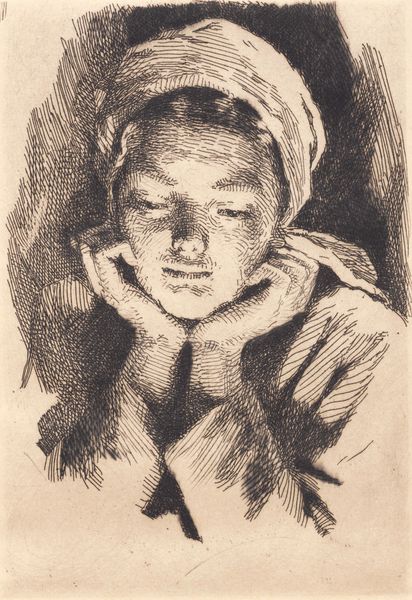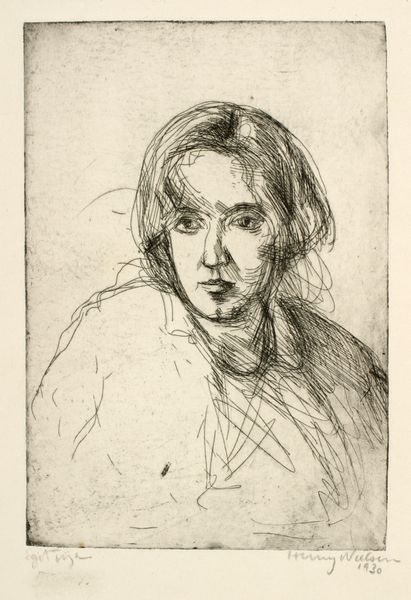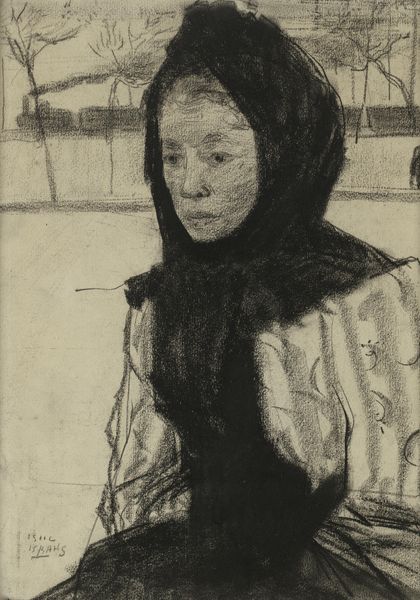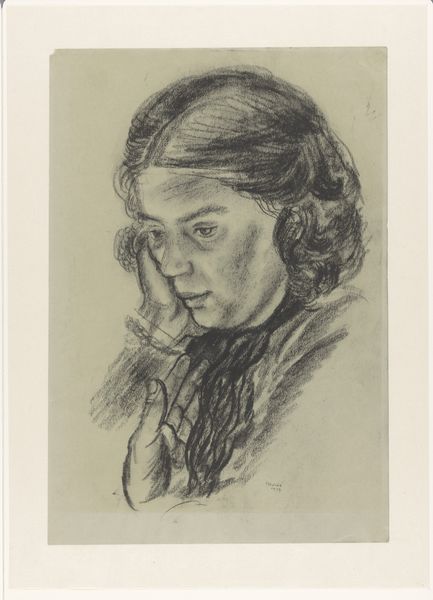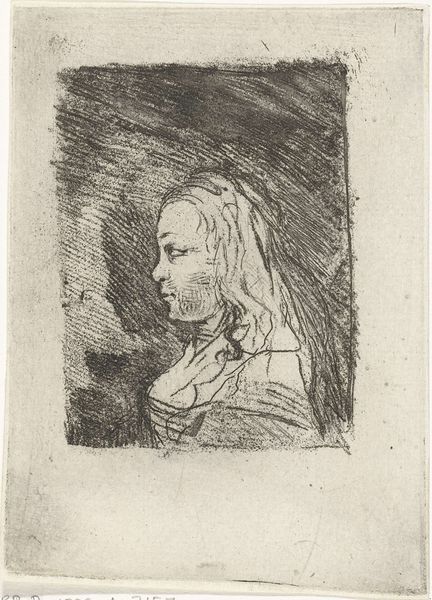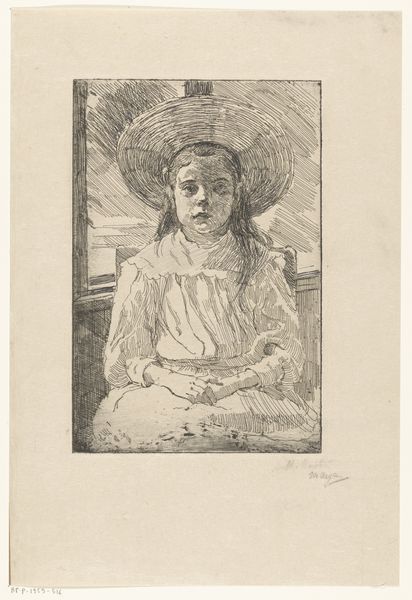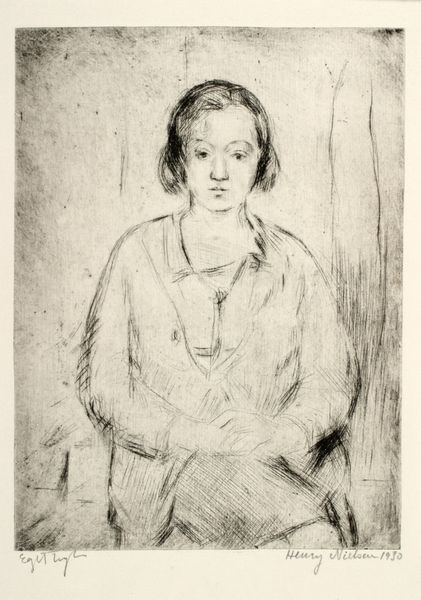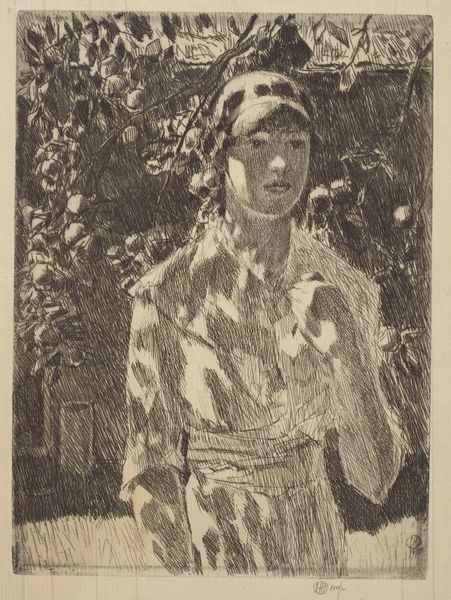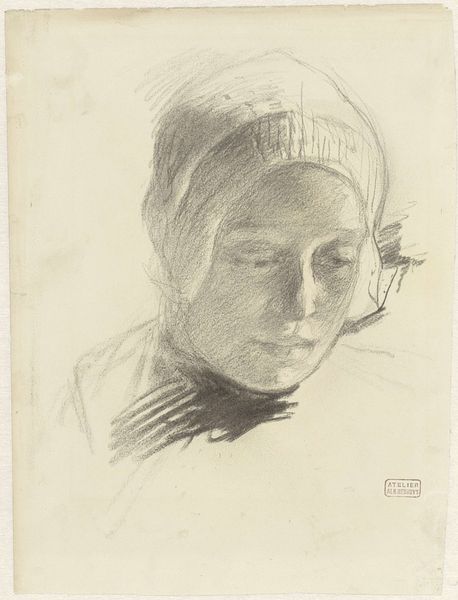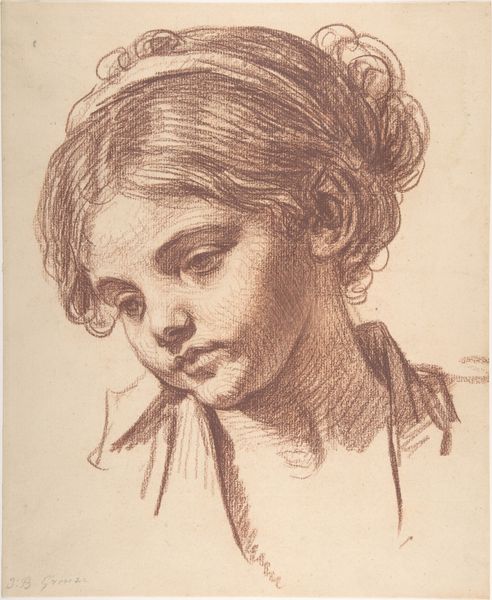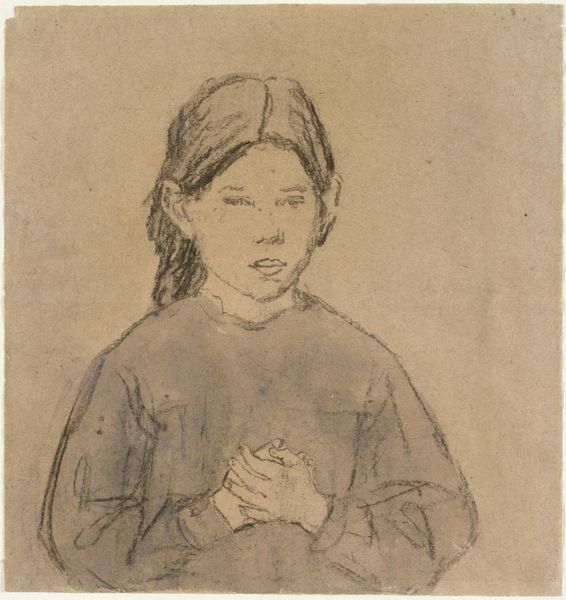
drawing, print, etching, paper
#
portrait
#
drawing
# print
#
etching
#
paper
#
realism
Dimensions: 225 × 175 mm (image/plate); 400 × 300 mm (sheet)
Copyright: Public Domain
Editor: Anders Zorn’s etching, *Emma, Girl from Mora*, created in 1897, depicts a young woman with a contemplative expression. The etching, rendered on paper, presents the figure draped in what looks like a heavy cloak and headscarf, contrasting with the plain background. What stories do you think the symbols within this portrait might tell us? Curator: I see this image as a carrier of cultural memory. Consider the headscarf. On one level, it’s a marker of regional identity, specifically of Mora, Sweden, where Zorn was from. But beyond that, head coverings often symbolize modesty, virtue, and a connection to tradition. Notice how the heavy lines emphasize the folds, almost weighing her down with this heritage. Editor: That's a really interesting point about the weight of heritage. So, it's not just a literal garment. It’s about something more profound. What does the intense focus of the sitter signal to you? Curator: Her direct gaze speaks volumes. It counters any notion of her being merely a passive representation of regional identity. To me, she’s challenging us to acknowledge her individual humanity beneath these cultural layers. She has her own psychological landscape. It is something that is subtly rendered, but present nevertheless. Editor: That is a useful reminder. It’s a perfect blend of cultural symbol and human presence. Thank you. Curator: Indeed. The symbols offer a pathway, but the lived experience of the individual complicates, and ultimately enriches, the image. It prompts us to see beyond simple classifications and appreciate the layered nature of identity.
Comments
No comments
Be the first to comment and join the conversation on the ultimate creative platform.
